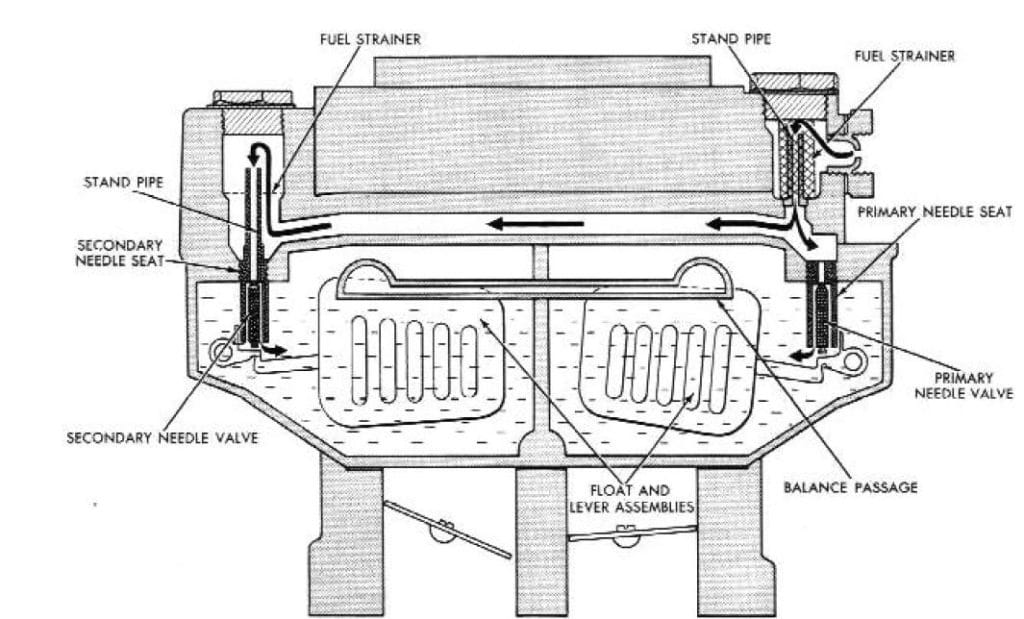Adjusting the WCFB float level and float drop.

The main body is partitioned into two compartments (primary and secondary), each containing a double pontoon float and lever assembly and a needle valve and seat. Fuel enters the primary side of the carburetor through a strainer screen at the fuel inlet and is directed to the primary needle valve and seat. The fuel is also conducted through a passage in the air horn to the secondary needle seat. A stand pipe is provided at both needle seats as an additional trap for foreign material that might prevent the needle valves from seating properly. See figure 9F-2.
A float lifter spring, which is connected to the lever arm of the primary float and to a bracket on the accelerator pump plunger, is incorporated to stabilize primary bowl fuel level and prevent float bounce upon sudden stops, or on rough roads (these springs are nowhere to be found). As the accelerator is released and the primary throttle plates are closed to the idle position, the upward movement of the pump plunger and attached spring bracket exerts tension on the spring and tends to stabilize the float in a level position. Because the float is maintained in a level position, needle valve bounce is minimized and excess fuel entry into the bowl is prevented. The float lifter spring also provides better float and fuel level stability when operating on rough, washboard type roads.
A balance passage connects the primary and secondary float chambers to provide fuel level control when the vehicle is accelerating, stopping, or rounding curves. The balance passage also tends to prevent flooding in the event one of the needles should temporarily become stuck open by maintaining equal fuel level between the two float chambers.



